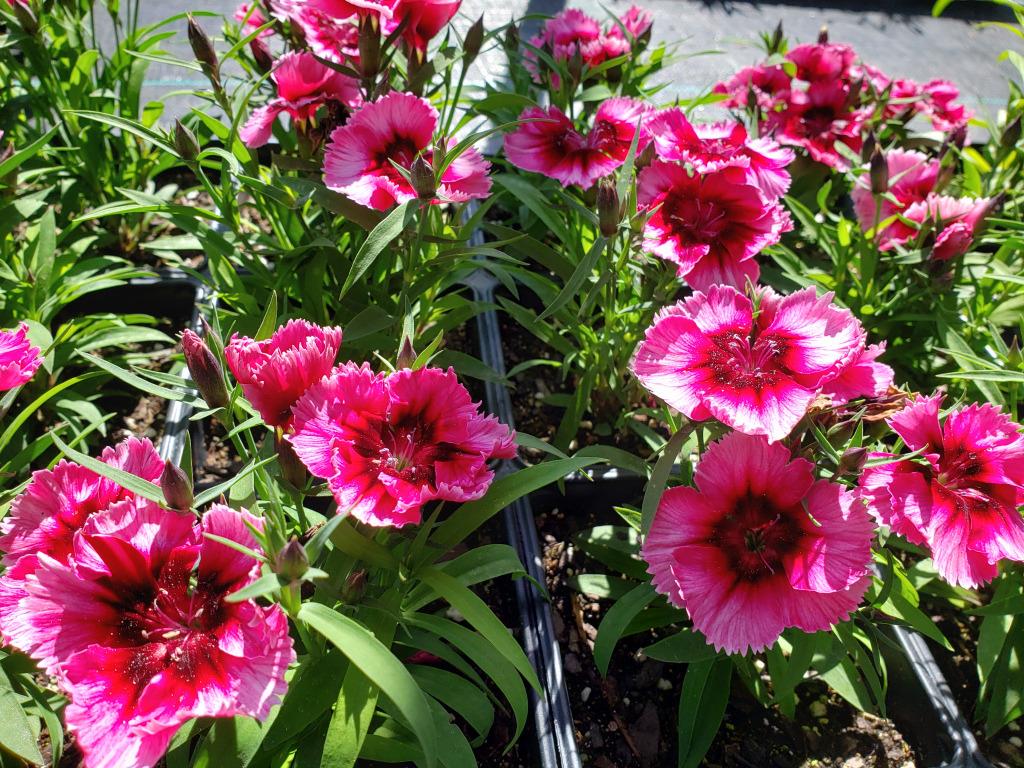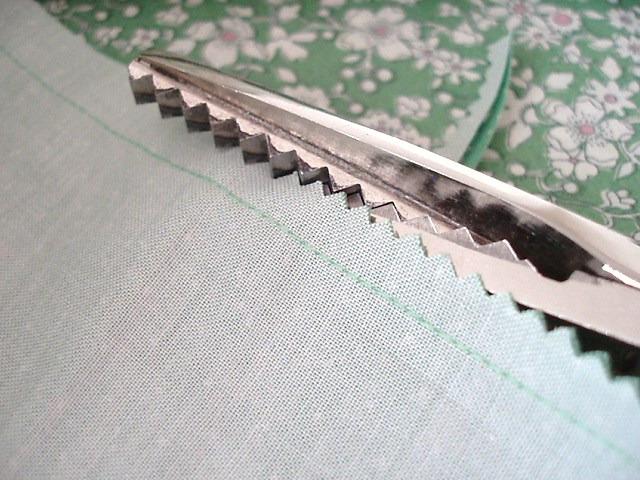 Dianthus - Diana Crimson Picotee
Dianthus - Diana Crimson Picotee
Almost everyone has come in contact with dianthus at some point in their lives. The carnations in floral arrangements are a type of dianthus, it’s a popular fall annual flower, and there are also perennial types as well. Dianthus is ancient flower, known to humans for thousands of years, but most of the ones planted today are new hybrids. In addition to the scientific name of Dianthus, these flowers are also known as sweet williams or pinks. It is believed that the color “pink,” actually came from the flower, like the color “rose” refers to the color of the rose flower. Pinks, the flowers, were named for the zigzagged edges of their petals. If you have a family member who sews, you may be familiar with the special scissors called “pinking shears,” which are used to “pink” the edges of fabric to help prevent raveling.
 Pinking shears cut a zigzag along the edge of a seam.
Pinking shears cut a zigzag along the edge of a seam.
Dianthus flowers, or "pinks," have zigzag edges on their petals.
Maintenance Tips
Sweet williams have a fairly short blooming period, so frequent deadheading is necessary if you want to keep them in bloom. They should be planted in well-drained soils, otherwise they will be susceptible to crown rot and rust. Snails and slugs can pose a problem, so some type of deterrent such as diatomaceous earth may be necessary.
-
 Dianthus - Floral Lace Picotee
Dianthus - Floral Lace Picotee
-
 Dianthus - Diana Lavender Picotee
Dianthus - Diana Lavender Picotee
ID Tips
While there are many different species of dianthus, the most common ones for fall annual planting are China pinks, Dianthus chinensis, or a hybrid between China pinks and another variety. Some of the key features to notice in Dianthus species are:
- Lance-shaped leaves (similar to a blade of grass or bamboo leaf) that wrap around the main stem.
- Leaves may have a bluish or silvery cast, due to a waxy layer. This is more pronounced in other Dianthus species.
- The flowers have 5 fan-shaped petals, and tend to be quite flat. The edges of the petals have a “pinked” appearance, ranging from a slight zigzag to deeply fringed petals resembling eyelashes (check out Dianthus superbus).
- Flowers range in color from white, pale pink, and lavendar, to brilliant and intense shades of hot pink, red, and fuchsia.
-
 Dianthus - Telstar Salmon
Dianthus - Telstar Salmon
-
 Dianthus - Floral Lace Cherry
Dianthus - Floral Lace Cherry